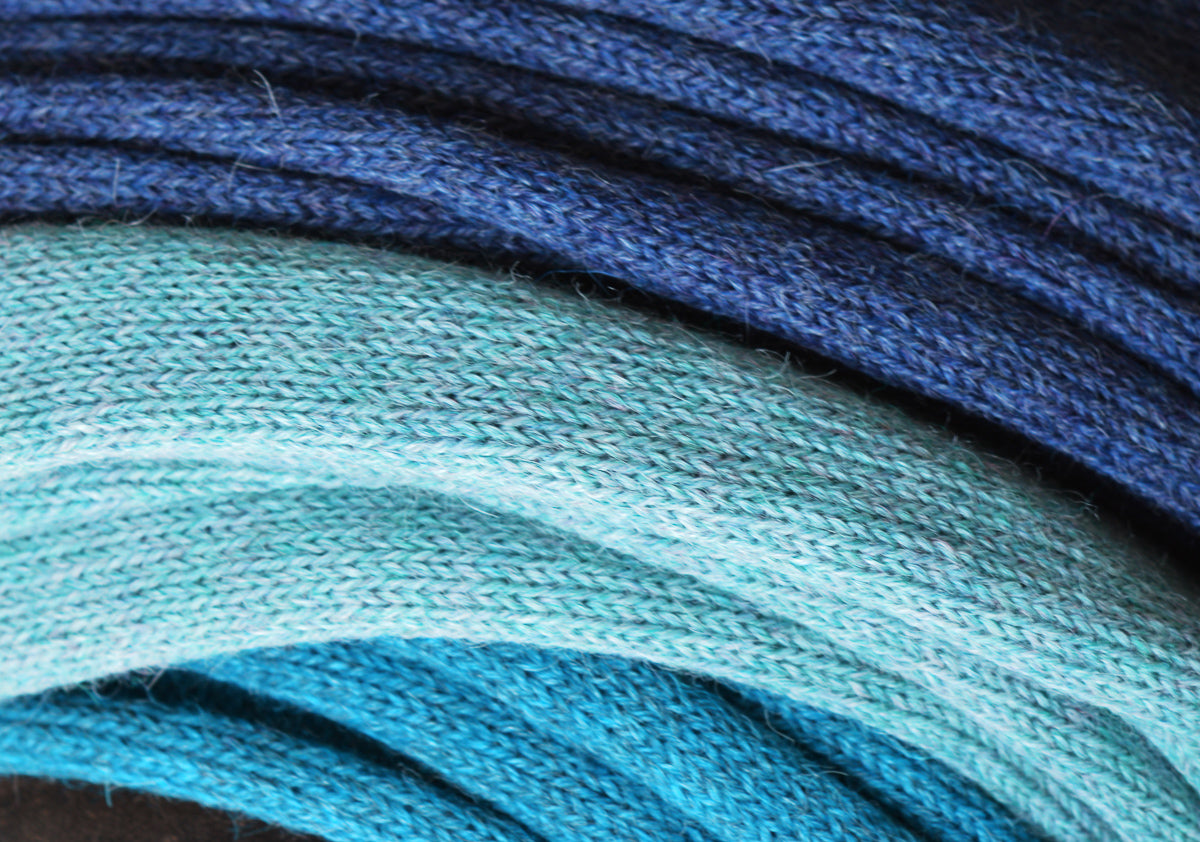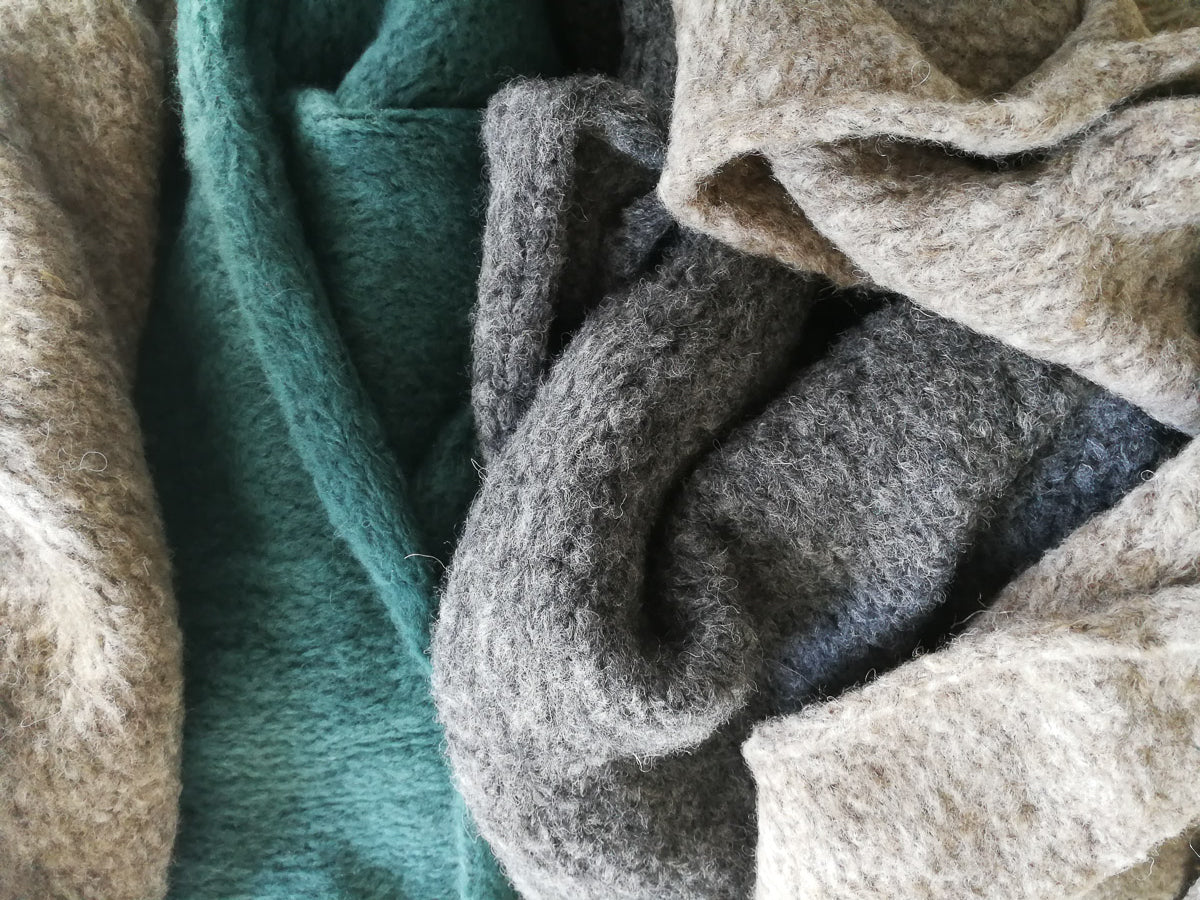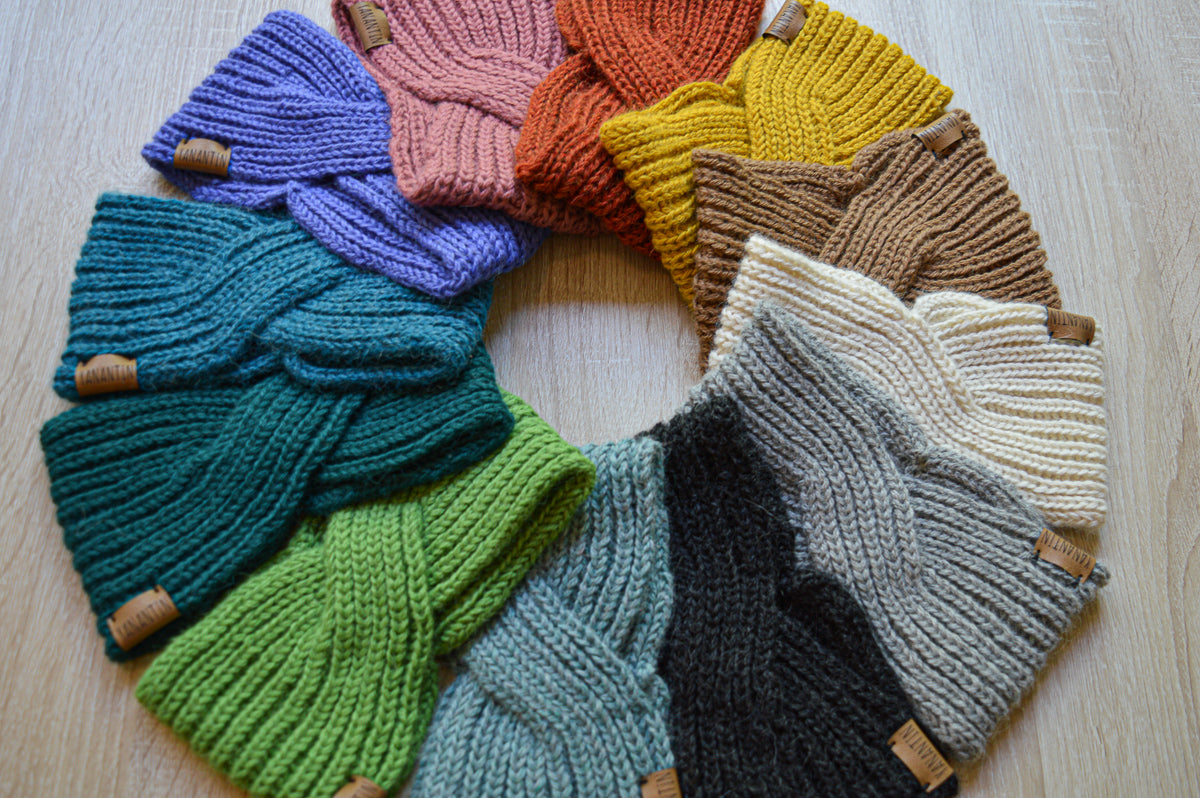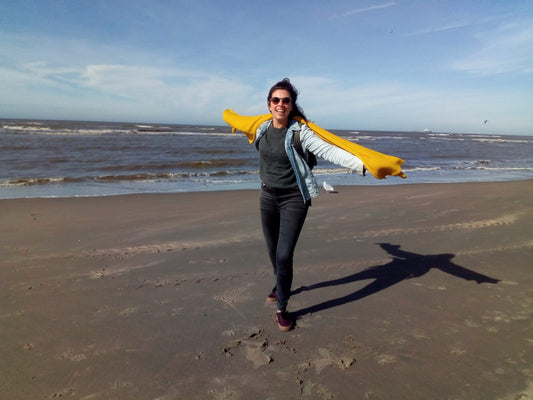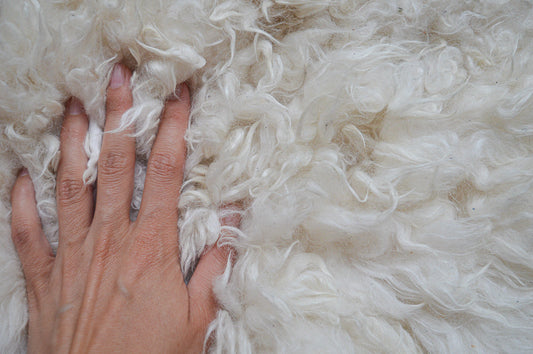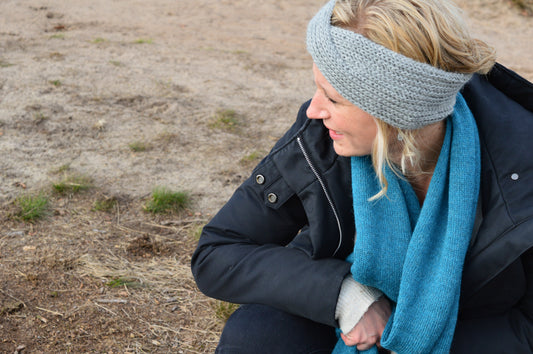I often get asked if baby alpaca comes from baby alpacas. And surprisingly… The answer is: not always. So, what exactly is baby alpaca?
Baby alpaca refers to high-quality fiber, not age. It’s defined by a fiber diameter between 21.5 and 23 microns. While younger alpacas have softer wool, older alpacas can still have fiber from their “blanket” area that meets this baby alpaca grade.
So, the age isn’t the key—it's the fineness of the fiber. Let’s dive deeper into this fluffy world of baby alpaca.
Does “Baby Alpaca” Refer to the Age of the Alpaca?
The term “baby” refers to the fiber category, not the age of the alpaca. However, since an alpaca’s fiber grows coarser over time, it's logical to assume that baby alpaca typically comes from younger animals, usually under 2 years old.
While it’s more common for younger alpacas to produce baby alpaca fiber, some adults can still produce high-quality fibers that fall within the baby alpaca category (21.5 to 23 microns). This depends on factors like genetics, diet, living conditions, and stress levels. So, although it’s less frequent, older alpacas can still produce that soft, high-quality wool.
If an alpaca continues producing baby alpaca-quality fiber after age 2, it’s possible to maintain that high-quality wool for the rest of its life, as long as it’s well cared for.
From Baby to Adult: Ageing AlpacasAn alpaca is considered a "baby" or "cria" from birth until about one year old, during which it’s still growing and developing. During the younger years, an alpaca's fiber quality can change more dramatically, especially between 6 months and 2 years. However, once they reach 3 to 5 years old, their fiber quality becomes more stable. For alpacas aged 6 years and older, the fiber's fineness tends to remain consistent throughout their life. Alpacas typically live to be around 15 to 20 years old. |
What Is Baby Alpaca: Fiber Quality and Softness
Baby alpaca is a premium grade of alpaca fiber known for its softness, lightweight feel, and excellent drape due to flexibility.
It has a fiber diameter of about 21.5 to 23 microns, which places it in the fine fiber category: slightly coarser than royal alpaca (which is under 21 microns), yet softer than regular alpaca (23–26.5 microns)
In terms of feel, baby alpaca is:
-
Softer than cashmere, for many people
-
Not itchy, making it perfect for garments worn next to the skin
-
Durable and warm, without being bulky
So when people talk about baby alpaca in terms of softness and quality, they’re talking about a soft, breathable, and luxurious natural fiber that’s perfect for high-end knitwear and garments.
Micron Count = Softness
Fiber softness is directly related to micron count: the lower the micron, the finer (and softer) the fiber feels. Baby alpaca ranges from 21.5 to 23 microns. It hits that sweet spot where it’s incredibly soft, but also stronger and more durable than many other fibers.
|
Category |
Micron Count |
|
Royal Alpaca |
18-20.5 microns |
|
Baby Alpaca |
21-22.5 microns |
|
Regular Alpaca |
23-26.5 microns |
|
Strong Alpaca |
>27 microns |
Smooth Fiber Structure
Both regular and fine alpaca fibers are known for their smooth scales compared to other animal fibers (like sheep wool). Yet, baby alpaca has even flatter scales due to its finer diameter, which creates:
-
A smoother texture
-
Less friction/itch
-
More sheen and drape
-
A flattering, fluid fit
Factors that Impact Fiber Quality
Alpaca fiber is typically categorized into regular, baby, and royal grades, based on its softness and micron count. But what determines where a fleece falls on that scale?
Several key factors influence fiber quality:
-
Age: Fiber is finest in the early years and coarsens over time.
-
Genetics & Nutrition: Superior genetics and a nutrient-rich diet lead to finer, more consistent fiber.
-
Living Conditions & Stress: Healthier, low-stress animals produce better quality fiber.
-
Body Parts: The softest fiber comes from the "blanket" area on the back; coarser fiber is found on the legs, neck, and belly.
-
Shearing Sequence: The first shearing usually yields the finest fleece, with quality decreasing slightly with each subsequent shearing.
Age Does Impact Fiber Quality
Alpaca fiber tends to be softest at a young age and gradually grows coarser over time. Therefore, most baby alpaca comes from younger alpacas, aged up to two.
The most noticeable drop in fineness happens within the first two years. After that, changes in fiber quality are more gradual.
While baby alpaca usually comes from younger alpacas, it's not exclusive to them. With the right genetics, nutrition, and low-stress living conditions, some alpacas can continue producing baby-grade fiber well into adulthood.
Interestingly, studies (like this one: ResearchGate) show that if an alpaca still produces baby alpaca-quality fiber after age 2, it's possible to maintain that quality for the rest of its life—as long as it's healthy and well cared for.
-
TLDR: As alpacas age, their fiber becomes coarser, producing a larger micron.
Good Nutrition & Genetics Improves Fiber Quality
Fiber quality starts with good breeding. Alpacas with superior genetics are more likely to produce finer, softer, and more uniform fleece. Selective breeding focuses on maintaining low micron counts, strong fiber density, and consistent crimp.
Nutrition plays a supporting role: high-quality, balanced diets help maintain healthy fiber growth. Deficiencies in protein, minerals, or vitamins (especially copper and zinc) can lead to weaker, coarser, or inconsistent fibers.
A well-fed alpaca will always grow a healthier, more luxurious coat than one undernourished or stressed.
Genetic Research & TrainingInca Tops is one of Peru’s leading alpaca wool producers—and the source of the wool for our products! They’re all about fiber quality, and I’m a huge fan of the initiatives they’re working on. I wanted to take a moment to share a few of the things they’re doing that I really admire:
Read more: Programas & Iniciativas & Programa Genetico |
Different Body Parts Yield Different Fiber Quality
Another key factor in alpaca fiber softness is the part of the body it's sheared from. Baby alpaca is most likely to come from the back, sides, and chest.
The “blanket” (the soft, fluffy area on the back) produces the finest fibers, as they experience less stress and are more protected from friction or dirt.
On the other hand, fibers from areas like the legs and underbelly are coarser because:
-
These areas are more exposed to dirt and friction.
-
The fibers here are shorter and less protected from environmental factors like lying down.
Here's a breakdown of the different fiber qualities by alpaca body parts:
|
Body Part |
Micron Range |
Length |
|
Blanket/Mid-Section |
Softest fibers |
3-5 inches long |
|
Back of the Alpaca |
Softest fibers |
3-5 inches long |
|
Neck |
Slightly coarser |
2-4 inches long |
|
Underbelly |
Coarser |
2-3 inches long |
|
Legs |
Coarsest |
1-2 inches long |
The Shearing Sequence Matters
The shearing sequence also directly impacts the quality and softness of the alpaca wool. It is more common that baby alpaca is sourced from the first shearing.
The shearing sequence refers to the order and timing of when alpacas are sheared during their lives. It’s typically broken down into stages, which reflect the age of the alpaca and the quality of the fiber produced at each stage.
Here's a breakdown:
-
First Shearing (around 1 year old)
-
This is when the alpaca produces the softest and finest fiber, which is the most coveted for high-quality wool.
-
The fiber is typically between 17-20.5 microns in diameter and 3-7 inches long.
-
Second Shearing (around 2 years old)
-
At this point, the fiber starts to become a bit coarser, but it’s still relatively fine compared to older shearings.
-
The fiber usually ranges from 21-25 microns and is 2-5 inches long.
-
Most of the softness decline occurs between the first and second shearings, with the change slowing after that.
-
Third Shearing (around 3 years old and older)
-
The fiber becomes even coarser, generally 25 microns or more in diameter.
-
The fiber length may be 1 inch or longer, but its quality becomes more consistent from this point onward.
Alpacas are sheared yearly or seasonally, and while their fiber quality stabilizes after the first two years, it becomes more consistent after an alpaca's second year of age. By the third shearing, the wool may be coarser and shorter, but alpacas can still produce high-quality fiber if they’re well cared for.
The number of shearings in an alpaca’s lifetime depends on its age, health, and how long it continues to produce high-quality fiber.
The Market-PitchIf you're like me and love finding fair-priced alpaca at local markets, ask the vendor which shearing their garments are from. They'll proudly share if it's from the first shearing, ensuring you’re getting high-quality, locally sourced alpaca wool. |
Baby Alpaca Compared to Regular Alpaca
Baby alpaca is smoother than regular alpaca wool. However, smoother doesn’t necessarily mean better. Regular alpaca has its own strengths thanks to its slightly coarser fiber. Literally, because regular alpaca is stronger.
-
Baby Alpaca: Slightly less tensile strength due to its finer diameter (still stronger than cashmere), making it great for luxurious garments that drape well.
-
Regular Alpaca: Thicker fibers means it’s more durable, warmer, and stronger. This makes regular alpaca better for structured garments or outerwear.
So structurally, baby alpaca is all about finesse (finer, smoother, and more flexible fibers). Regular alpaca brings a bit more strength and bulk, with a coarser feel due to its thicker fiber structure.
|
Feature |
Baby Alpaca |
Regular (Medium) Alpaca |
|
Micron Count |
21.5–22.5 microns |
23–26.5 microns |
|
Softness |
Ultra-soft, silky, cashmere-like |
Soft enough for most skin types |
|
Fiber Diameter |
Finer, thinner |
Thicker, more robust |
|
Surface Scales |
Fewer, flatter scales = smoother feel |
Slightly more pronounced scale edges |
|
Itch Factor |
Minimal to none (great for sensitive skin) |
Mildly itchy for some |
|
Luster (Shine) |
Higher natural sheen |
Moderate sheen |
|
Drape |
Excellent drape due to flexibility |
Slightly stiffer |
|
Strength |
Strong but more delicate than coarser fibers |
Higher tensile strength, more durable |
|
Best For (Purpose) |
Next-to-skin garments (scarves, sweaters), indoor wear, layering |
Outerwear, blankets, winter garments |
|
Best for (Environment) |
Milder climates, moderate temperatures |
Colder climates, chilly to freezing temperatures |
|
Price |
Higher due to rarity and luxury feel |
More affordable, widely available |
Benefits of Baby Alpaca
Since baby alpaca is a high quality fiber, it comes with loads of great features.
Softness & Comfort
Baby alpaca has a micron count between 21 and 23, making it one of the softest types of alpaca wool. The smaller the micron, the finer the fiber—and the less it pricks. That soft feel makes it ideal for next-to-skin garments like scarves, sweaters, and baby blankets.
Great for Sensitive Skin
Because of its fine scale structure, baby alpaca tends to be less irritating than many other types of wool, including regular alpaca wool. It’s often tolerable for people with sensitive skin, though reactions can vary.
Always patch-test if you’re unsure.
Gentle for Babies
Baby alpaca is a great option for baby items like blankets and clothing (you might want to use it with a protective layer):
-
Naturally hypoallergenic and lanolin-free, so it’s less likely to trigger reactions.
-
Fine, soft texture that feels gentle on delicate skin.
-
Better tolerated than traditional wool.
|
Find your favorite baby alpaca baby products in our webshop. From the tiniest little socks to comfy swaddle blankets and cool-kid sweaters. |
Strong, Resilient, and Low Pilling
Even though the fibers are slightly shorter than regular alpaca, baby alpaca is still long enough (60–70 mm) to create strong yarn. Its scale structure allows fibers to settle well, resulting in garments that are less likely to pill, stretch, or shed with proper care.
Lightweight but Insulating
Baby alpaca is lighter than regular alpaca, yet still offers great warmth. It’s ideal for moderate to cool climates, providing insulation without causing overheating. Perfect for layering and maintaining comfort throughout the day.
Downsides of Baby Alpaca Wool
More Prone to Felting
Baby alpaca wool has a slightly shorter fiber length than regular alpaca. Because it’s a finer fiber, baby alpaca felts faster with heat or agitation.
Therefore it requires a bit more careful handling, which can be time-consuming. In short, avoid machine washing and always hand wash cold with gentle detergent.
→ Caring Instructions for Alpaca Wool
Softness is Still Subjective
Some people with very sensitive skin may still feel a little itch, even with baby alpaca. Always patch-test on your inner arm or cheek if you’re unsure.
Ethical Sourcing Is CRUCIAL
Before you jump to conclusions, baby alpaca isn't unethical by default, but where it comes from matters. Ethical sourcing turns a potential con into a major pro.
-
Misleading Name: Some people think “baby alpaca” means it comes from baby animals—which could be unethical if animals were shorn at a really young age. In reality, baby alpaca refers to fiber fineness, not the animal's age.
-
Unethical Farms: If the wool comes from farms that mistreat animals, over-shear, or exploit workers, then yes, that’s a downside. You’ll need to double check the brand you’re buying from.
-
Lack of Transparency: Many mass-market brands don’t disclose sourcing, which raises red flags about animal welfare and labor practices. Again, do your research!
Not for Extreme Cold by Itself
Baby alpaca is warm but lighter and less dense compared to regular alpaca. While it offers excellent thermal regulation, it may not provide enough insulation for extremely cold temperatures on its own.
In contrast, regular alpaca, being thicker and denser, is better suited for harsh winters. To make baby alpaca suitable for extreme cold, thicker knits or layering with other materials may be necessary.
It’s Not Cheap
Baby alpaca is considered a luxury fiber and the price tag reflects that. However, the quality, durability, and feel generally justify the investment.
How Much Should A Baby Alpaca Woolen Garment Cost?
Baby alpaca wool is on average 50% more expensive than alpaca wool. So if you could buy a small 100% alpaca woolen scarf for $60, expect to pay at least $90 for a baby alpaca one.
-
Find the full price comparison here: How Much Should an Alpaca Wool Garment Cost?



